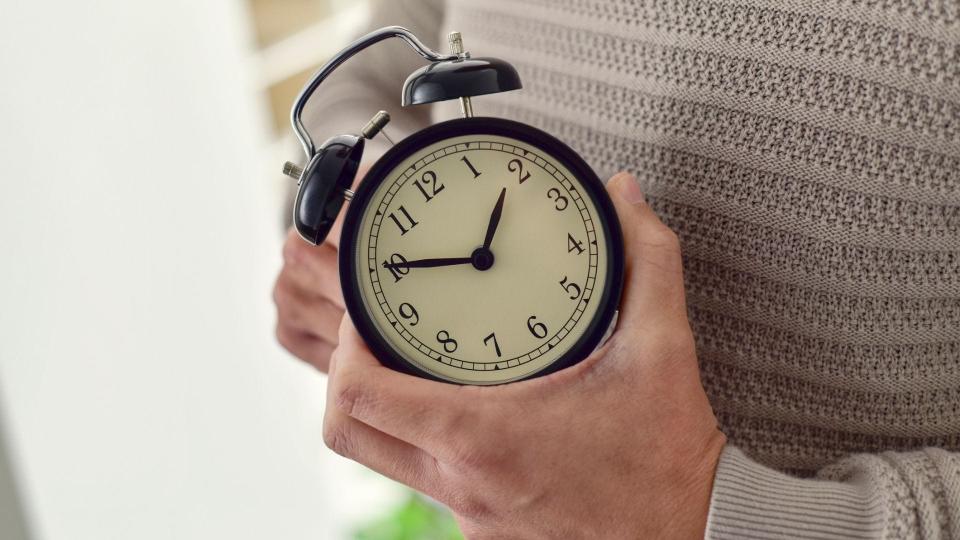When is daylight saving time 2023? Here's what to know about the time change in March.
Like it or not, the annual ritual of changing our clocks to daylight saving time is coming at 2 a.m., Sunday, March 12.
Since most of our computers, smartphones and DVRs automatically change the time for us, it's not as much of a chore as it used to be. But unless you have smart appliances, microwaves and ovens are among the household items that will need a manual adjustment.
Who's in charge of DST? When did it start? Why does the United States and more than 70 other countries observe it? Here are the answers to those questions, and more:
Do we gain or lose an hour?
We all lose an hour of sleep when going to DST, as the day is only 23 hours long.
When clocks go forward, that one hour of daylight is basically shifted from morning to evening as daylight saving time begins. We won't go back to standard time until Sunday, Nov. 5.
Who's in charge of time?
Surprisingly, the U.S. Department of Transportation is in charge of daylight saving time and all time zones in the U.S.
"The oversight of time zones was assigned to DOT because time standards are important for many modes of transportation," according to the department's website.
What is the future of daylight saving time?: Year-round change depends on federal vote.

When did the U.S. officially enact daylight saving time?
DST became a national standard in the U.S. in 1966 with the passage of the Uniform Time Act. States either have to change the clocks at a specified time or stick with standard time throughout the year.
In 2007, the federal government expanded daylight saving time in order to reduce energy consumption. The law now specifies that daylight time applies from 2 a.m. on the second Sunday of March until 2 a.m. on the first Sunday of November
Daylight saving time now accounts for about 65% of the year.
Federal law does allow states to remain in standard time all year, but states must first get approval from Congress before making daylight saving time permanent.
Did Benjamin Franklin invent the time change?
While not necessarily advocating changing time, Benjamin Franklin urged his fellow countrymen to work during daylight and sleep after dark, thus saving money on candles. (It was likely a tongue-in-cheek comment.)
'Zombie ant fungus' in humans?: Climate change sparks fungi fears — Some serious and some silly.
How many countries observe DST?
More than 70. It's known as summer time in some countries, including the United Kingdom and in Europe. No one is sure just how much daylight is saved, globally, each year, though physics indicates none.
Why was daylight saving time created?
The DOT says daylight saving time conserves energy. When the sun sets later, it's presumed that people will stay out longer and spend more time outside. Theoretically, that leads to less electricity for lights and appliances.
The debate over daylight saving time, which was first enacted by the federal government during World War I as a way to conserve coal, has picked up momentum in recent years.
What are the downsides to DST?
Not everyone agrees it offers energy-saving benefits. Some studies report the time switch saves energy on lighting, but is surpassed by increases in heating and air conditioning. It can also mess with our sleep patterns, at least temporarily.
Other health impacts consequences, according to various studies and research, include increased headaches, heart attacks and depression.
What states do not do daylight saving time?
Only two states don't observe it – Hawaii and Arizona. Other non-observers include American Samoa, Guam, Puerto Rico and the Virgin Islands.
Do some states want year-round DST?
Yes. According to the National Conference of State Legislatures, in the past five years, 19 states have "enacted legislation or passed resolutions to provide for year-round daylight saving time, if Congress were to allow such a change, and in some cases, if surrounding states enact the same legislation. Because federal law does not currently allow full-time DST, Congress would have to act before states could adopt changes."
Grammar check: It's actually saving –not savings time
The correct term is daylight "saving" (not savings) time. However, the incorrect term “daylight savings time” is commonly used, especially in Australia, Canada and the United States. It's also supposed to be lowercase, not uppercase, according to the Associated Press stylebook.
Dig Deeper
Daylight saving time is here: But why does it exist in the first place? A full history in the U.S.
Is daylight saving time healthy for you?: No, experts say, pointing to lost sleep
DST saves deer?: Making daylight saving permanent could save more than 30,000 deer every year, study suggests
Daylight saving time's future: Year-round change depends on federal vote.
This article originally appeared on USA TODAY: Daylight saving time 2023: When does time change? Do we lose an hour?

 Yahoo Sports
Yahoo Sports 